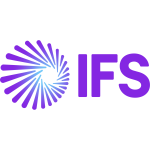What is our primary use case?
We're using it for accounting, materials management, and sales and distribution. We are happy with SAP solutions. We are in the dairy products industry here in Chile, and there are good solutions for SAP in this industry.
How has it helped my organization?
The best improvement that we have seen using SAP solutions is that it shortens the cycle when creating financial reports. Before we installed SAP solutions, we had to do about 10 days of work to create the account reports for the managerial board. Now, ita takes about three days of work to do it. We are able to give information to the board in a more agile way.
What is most valuable?
The most valuable feature is the security. We have a very small IT team in our company, so a lot of the maintenance has to be done by the provider. So SAP gives us the maintenance and software solutions that we need.
What needs improvement?
They are not making a big effort to make it easy to integrate solutions from other vendors. It's not easy at all. When you have solutions from other vendors, SAP is not doing a good job integrating them.
SAP is giving us the solutions that they provide. They buy companies. They buy solutions. And they expect that we will choose the solutions that they buy. I suppose that's the reason that they are not making a big effort in making it easy to work with solutions from other vendors. I imagine Oracle is the same.
Integration is what they can do better.
For how long have I used the solution?
More than five years.
What do I think about the stability of the solution?
It works well. In our company, we don't have issues with stability. We haven't had any in 10 years, and that's a long time.
What do I think about the scalability of the solution?
We don't have scalability problems. We can go 100 times our volume of transactions and we won't have any problems with it. We are not a very big shop so we don't have any problems, nor do we think that in the future we are going to have trouble with it.
How are customer service and technical support?
We don't have problems with support. However, it's not as good as it used to be. In the past, they gave better support. I imagine they want you to go to Gold Support, or Platinum, or Titanium Support. We are using Standard Support, and it's good for us. We don't need anything more for the time being.
Which solution did I use previously and why did I switch?
We were using an ERP that didn't have a big company behind it. The company started to have financial problems, the stock price went from $200 to about 10 cents. So we thought the solution would no longer be supported, and we didn't want to have our financials and materials management in software that didn't have a big company behind it.
So we started looking at ERP solutions in our industry. Here in Chile, the best option was SAP ERP. We spoke with people in the same industry in Argentina, Uruguay, and Brazil. They had no problems with it, so it was the natural option for us to go with ERP from SAP.
When selecting a vendor the most important factor is the vendor's availability. We don't want to find that our provider has problems with availability. When we have a problem, they have to have a solution. The provider has to have a lot of clients that are similar to us, and it has to have been providing the solution for a long time. That way, if we are going to have problems, somebody has had them before and there will already be solutions for them.
How was the initial setup?
I was involved in the setup and it was not easy. We had to bring a technician from another country, from Brazil. He had to come for three to four weeks to do the installation. So it wasn't easy at all.
But once they did it, they documented it. So today, it's not that hard because we have everything written. Today, we can install another system and do it with internal IT staff. So we learned from the process.
Which other solutions did I evaluate?
PeopleSoft was on our shortlist at that time, although today it's Oracle. But they made it very hard for us to go with them because they didn't want to do meetings. They didn't respond to our calls. That was the worst kind of vendor you can find when you are looking for a new one.
There was another, Meccano, here in Chile. It wasn't on the same scale as SAP ERP. So we went for the sure bet and went with SAP.
What other advice do I have?
Check and double-check the fine print of the contract. Also, find a hardware provider that can scale to the volume of your business, and have a hardware provider that already has implemented solutions. In our case, IBM made a mistake when sizing the server that we needed and we had three months of performance problems. It wasn't the fault of SAP, it was the fault fo IBM. It was a bad way to start with a new system, but they didn't have enough experience in sizing the server for the solution.
I give the solution an eight out of 10. Everything works well enough, but something that could be better is their ability to work with customer's processes in the way the customer does them. I understand that they propose best practices, but when you have been in your industry for 50 years, you know what the best practices are. So you are not always going to change your process because your ERP provider thinks there are better ways.
Disclosure: My company does not have a business relationship with this vendor other than being a customer.










